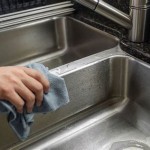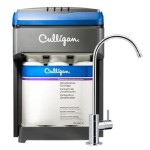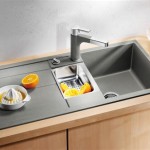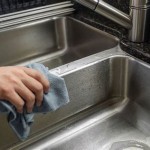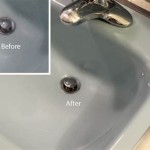Kitchen Sink Drain With Dishwasher
The kitchen sink drain, a seemingly simple component, plays a vital role in maintaining a functional and hygienic kitchen. It serves as the central drainage point for both manually washed dishes and wastewater discharged from the dishwasher. Understanding its components, installation, and maintenance is crucial for preventing clogs, leaks, and other plumbing issues.
Key Components of a Kitchen Sink Drain System
Several key components work together to form a complete kitchen sink drain system. The drain tailpiece, typically made of chrome-plated brass or PVC, connects the sink strainer basket to the P-trap. The P-trap, a U-shaped pipe, creates a water barrier that prevents sewer gases from entering the home. The drain pipe extends from the P-trap and connects to the main drain line, carrying wastewater away from the sink. The dishwasher drain hose typically connects to the garbage disposal inlet or a dedicated dishwasher inlet on the sink drain tailpiece, allowing wastewater from the dishwasher to flow into the drain system.
In addition to these primary components, other elements contribute to the system's functionality. A sink strainer, placed in the sink drain opening, catches food particles and debris, preventing them from entering the drain pipes and causing clogs. The dishwasher air gap, a small device usually installed on the countertop near the sink, prevents contaminated water from backing up into the dishwasher. It diverts air into the dishwasher drain hose, breaking the siphon effect that could pull dirty water back into the appliance.
Connecting a Dishwasher to the Kitchen Sink Drain
Properly connecting the dishwasher to the kitchen sink drain is essential to ensure efficient drainage and prevent leaks. Typically, the dishwasher drain hose connects to a dedicated inlet on the garbage disposal or, in the absence of a disposal, directly to the sink drain tailpiece. The connection is typically made using a high-loop, which curves the dishwasher drain hose up to the underside of the countertop before dropping down to the drain connection. This loop prevents wastewater from flowing backward into the dishwasher.
When connecting the dishwasher drain hose, ensuring a tight seal is crucial to prevent leaks. Hose clamps are typically used to secure the hose to the connection point. It is important to use the correct size clamp and tighten it securely. Over-tightening can damage the hose, while under-tightening can lead to leaks. Regularly inspecting the connection for leaks is also recommended.
If a garbage disposal is present, the dishwasher drain hose typically connects to a nipple on the side of the disposal unit. It is important to knock out the plug inside this nipple before connecting the hose. This plug prevents water from leaking out of the disposal during shipping and must be removed before use. Failure to remove the plug can prevent the dishwasher from draining correctly.
Maintenance and Troubleshooting
Regular maintenance of the kitchen sink drain system can prevent clogs and other plumbing issues. Periodically cleaning the sink strainer by removing trapped food particles is essential. Flushing the drain with hot water can help clear minor clogs and remove grease buildup. Avoid pouring grease down the drain, as it can solidify and cause stubborn blockages.
If a clog does occur, several methods can be used to clear it. A plunger can often dislodge blockages in the P-trap or drain pipe. Chemical drain cleaners can dissolve clogs, but they should be used with caution as they can damage pipes if used improperly. A drain snake, also known as a plumber's snake, can be used to reach deeper clogs and break them up. If these methods fail to resolve the issue, it is best to contact a qualified plumber.
Leaks in the drain system can occur at various points, such as the connections between pipes or around the sink strainer. Inspecting the connections regularly and tightening loose fittings can often fix leaks. Replacing worn-out washers or seals can also prevent leaks. If the leak persists, contacting a plumber to assess the situation is recommended.
Understanding the workings of your kitchen sink drain system, including its connection to the dishwasher, is vital for ensuring a smoothly running kitchen. Regular maintenance and prompt attention to any developing issues will prevent more significant problems down the line, ensuring efficient drainage and preventing costly repairs.

How To Prevent Sink Water From Draining Into My Dishwasher Quora

How To Connect A Kitchen Sink Drain

How To Install A Kitchen Drain Trap Assembly With Dishwasher Tailpiece

Kitchen Sink Drainage Step By Youtube

Kitchen Sink Drain Pipe Dishwasher

How To Connect A Kitchen Sink Drain 2024

Kitchen Sink Extremely Slow Drain Doityourself Com Community Forums

Dishwasher Filling With Sink Water

How To Install Kitchen Sink Drain For Beginners

Diy Dishwasher And Water Heater Wiring Diagram
See Also

